一、文件操作
文件操作头文件:<fstream>
操作文件的三大流:
1、ofstream:写操作
2、ifstream:读操作
3、fstream:读写操作
1、文本文件
写文件
步骤:
1、包含头文件:#include<fstream>
2、创建流对象:ofstream ofs;
3、打开文件:ofs.open("文件路径",打开方式);
4、写数据:ofs<<"写入的数据"
5、关闭文件:ofs.close();
文件打开方式:
打开方式
解释
ios::in
为读文件而打开文件
ios::out
为写文件而打开文件
ios::ate
初始位置:文件尾
ios::app
追加方式写文件
ios::trunc
如果文件存在先删除,再创建
ios::binary
二进制方式
注意:文件的打开方式可以配合使用,用 | (或)操作符
例如:用二进制方式写文件
ios::binary | ios::out
示例:
#include<fstream> //1、包含头文件
void wfile() {
//2、流对象
ofstream ofs;
//3、打开文件
ofs.open("test.txt",ios::out);
//4、写文件
ofs << "大鹏一日同风起" << endl;
ofs << "扶摇直上九万里" << endl;
ofs << "有约不来过夜半" << endl;
ofs << "闲敲棋子落灯花" << endl;
//关闭文件
ofs.close();
}
int main() {
wfile();
system("pause");
return 0;
}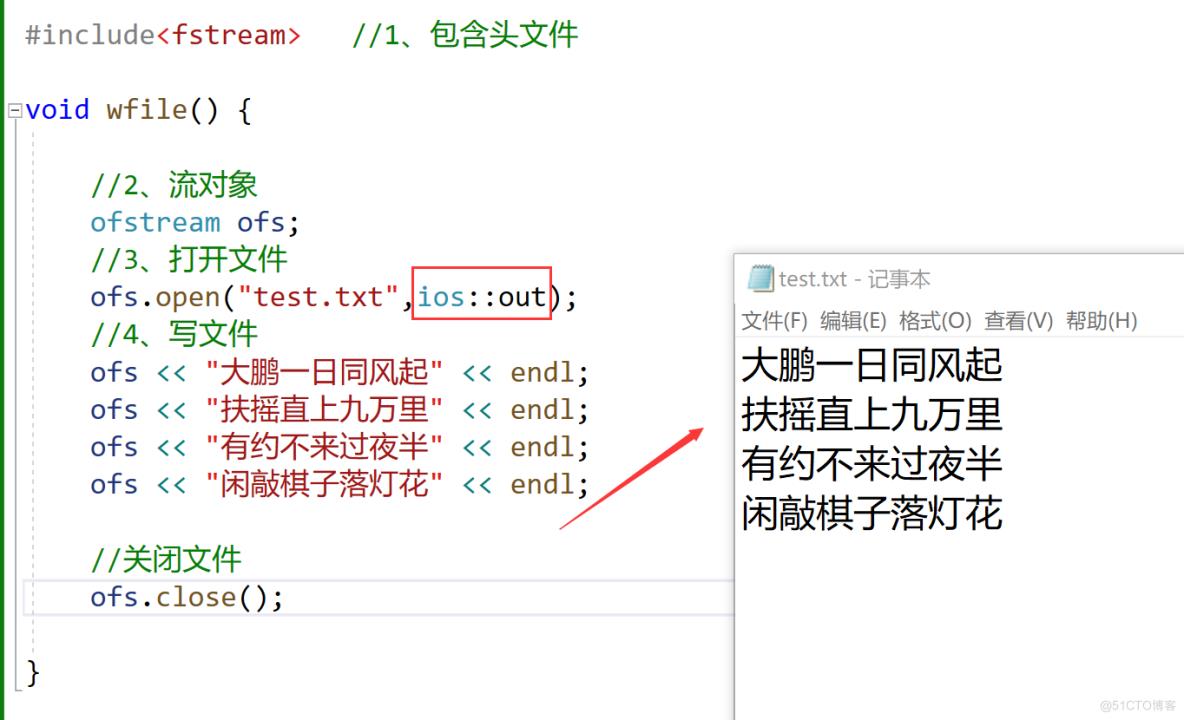
读文件:
步骤:
1、包含头文件:#include<fstream>
2、创建流对象:ifstream ifs;
3、打开文件并判断是否成功打开:ifs.open("文件路径",打开方式);
4、读数据:四种方式读取
5、关闭文件:ifs.close();
四种读取方式:
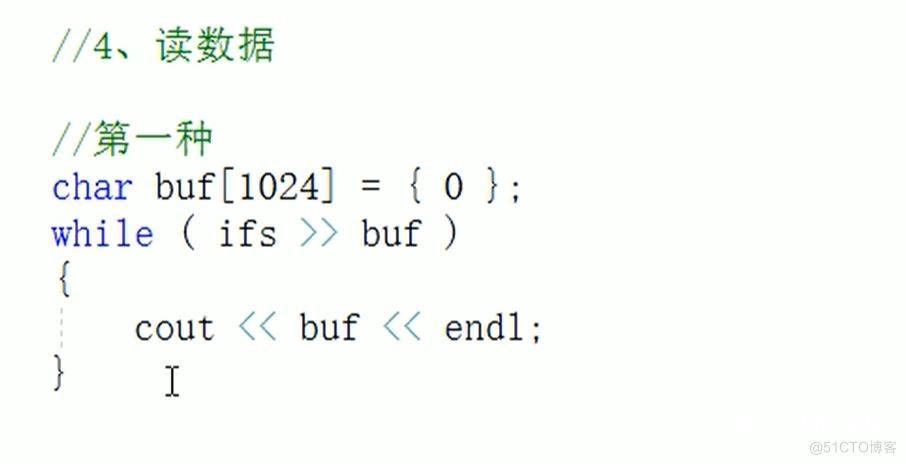



不推荐使用第四种,其余的可根据个人喜好使用,个人推荐第三种~
示例:
#include<fstream> //1、包含头文件
#include <string>
void rfile() {
//2、流对象
ifstream ifs;
//3、打开文件,判断是否成功
ifs.open("test.txt", ios::in);
//判断
if (! ifs.is_open()) {
cout << "文件打开失败" << endl;
return;
}
//4、写文件
////第一种
//char Buf[1024] = { 0 };
//while (ifs>>Buf) {
// cout << Buf << endl;
//}
////第二种
//char Buf[1024] = { 0 };
//while (ifs.getline(Buf,sizeof(Buf))) {
// cout << Buf << endl;
//}
//第三种
string Buf;
while (getline(ifs,Buf)) {
cout << Buf << endl;
}
////第四种
//char c;
//while ((c = ifs.get()) != EOF) {
// cout << c;
//}
//关闭文件
ifs.close();
}
int main() {
rfile();
system("pause");
return 0;
}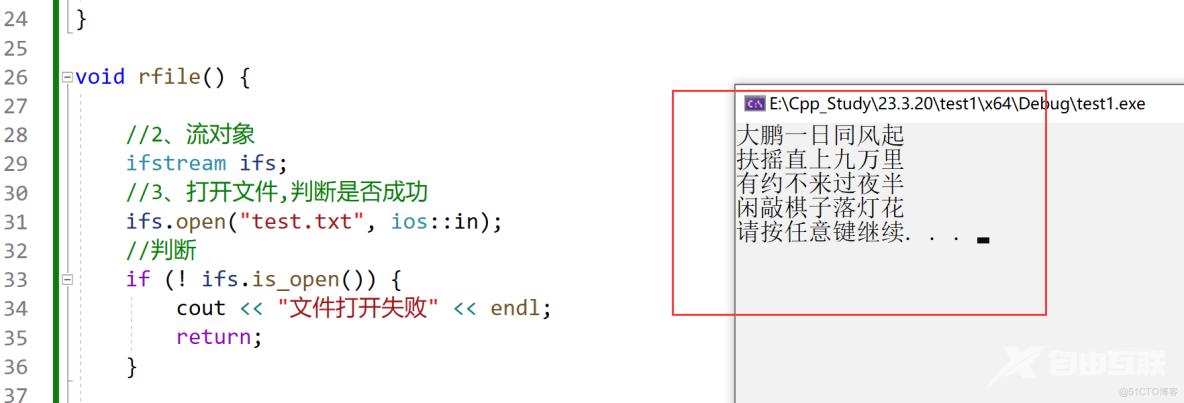
2、二进制文件
打开方式指定为:ios::binary
写文件:
二进制方式写文件主要利用流对象调用成员函数write
函数原型 :ostream& write(const char * buffer,int len);
参数解释:字符指针buffer指向内存中一段存储空间。len是读写的字节数
示例:
#include<fstream> //1、包含头文件
#include <string>
//二进制文件
class Person {
public:
char Name[10]; //姓名
int age;//年龄
};
//写二进制文件
void binWfile() {
Person p = { "张三",18};
//1、定义头文件
//2、流对象
ofstream ofs("Person.txt", ios::out | ios::binary);
//3、打开文件
//ofs.open("Person.txt", ios::in | ios::binary);
//4、写文件
ofs.write((const char*) & p,sizeof(Person));
//5、关闭文件
ofs.close();
}
int main() {
binWfile();
}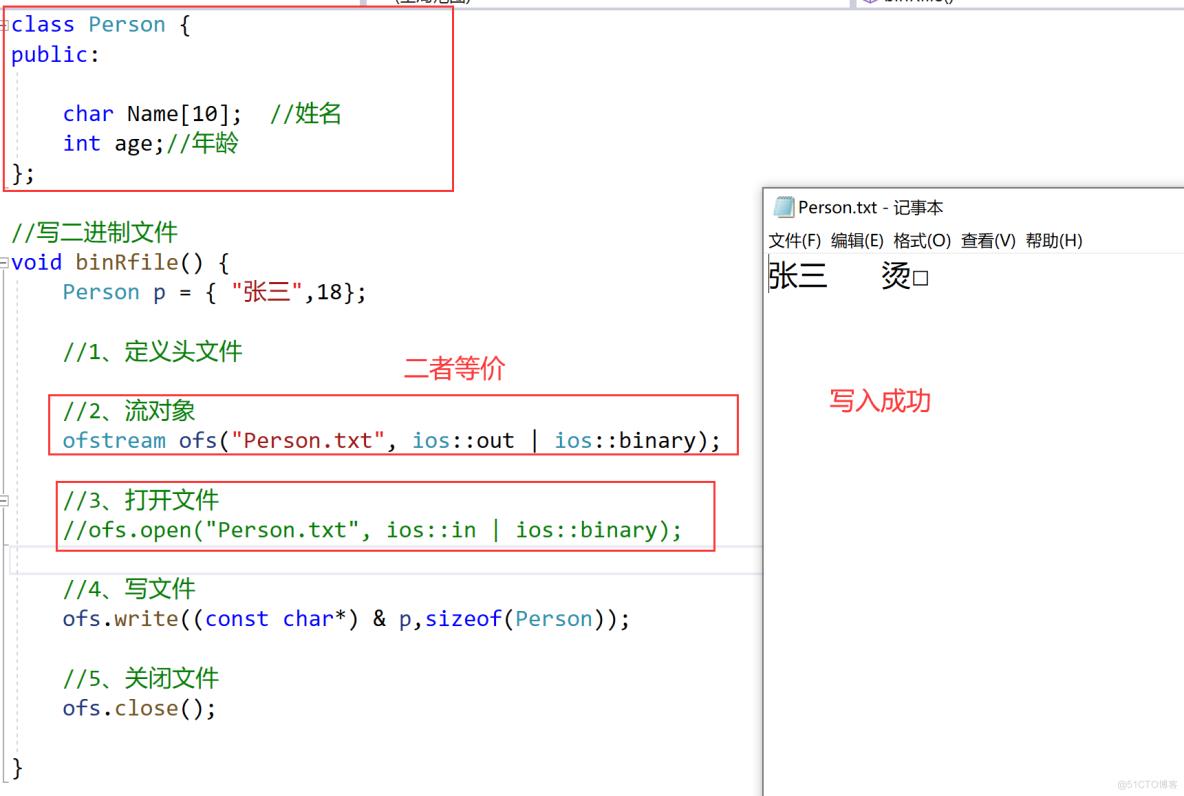
读文件:
二进制方式读文件主要利用流对象调用成员函数read
函数原型:istream& read(char *buffer,int len);
参数解释:字符指针buffer指向内存中一段存储空间。len是读写的字节数
示例:
#include<fstream> //1、包含头文件
//二进制文件
class Person {
public:
char Name[10]; //姓名
int age;//年龄
};
//读二进制文件
void binRfile() {
Person p;
//1、定义头文件
//2、流对象
ifstream ifs("Person.txt", ios::in | ios::binary);
if (!ifs.is_open()) {
cout << "二进制文件打开失败" << endl;
return;
}
//3、打开文件
//ofs.open("Person.txt", ios::in | ios::binary);
//4、读文件
ifs.read((char*)&p, sizeof(Person));
//ofs.write((const char*) & name, sizeof(Person));
cout << "姓名:" << p.Name << " 年龄:" << p.age << endl;
//5、关闭文件
ifs.close();
}
int main() {
binRfile();
}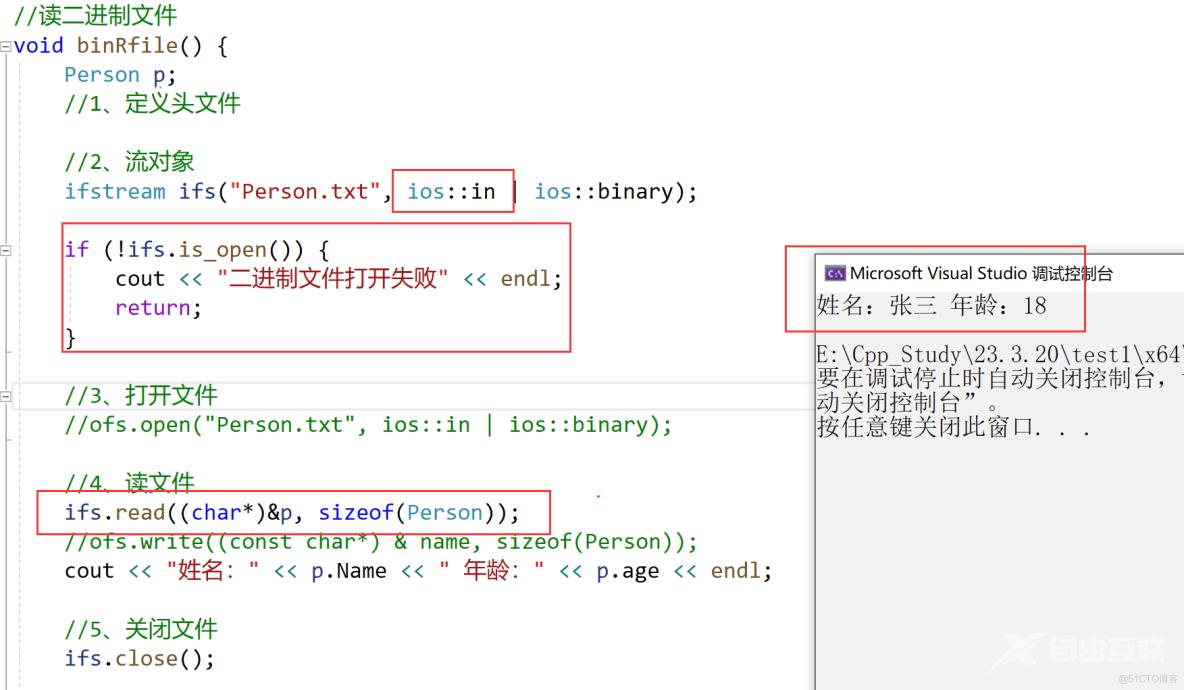
喜欢就点赞收藏吧~
